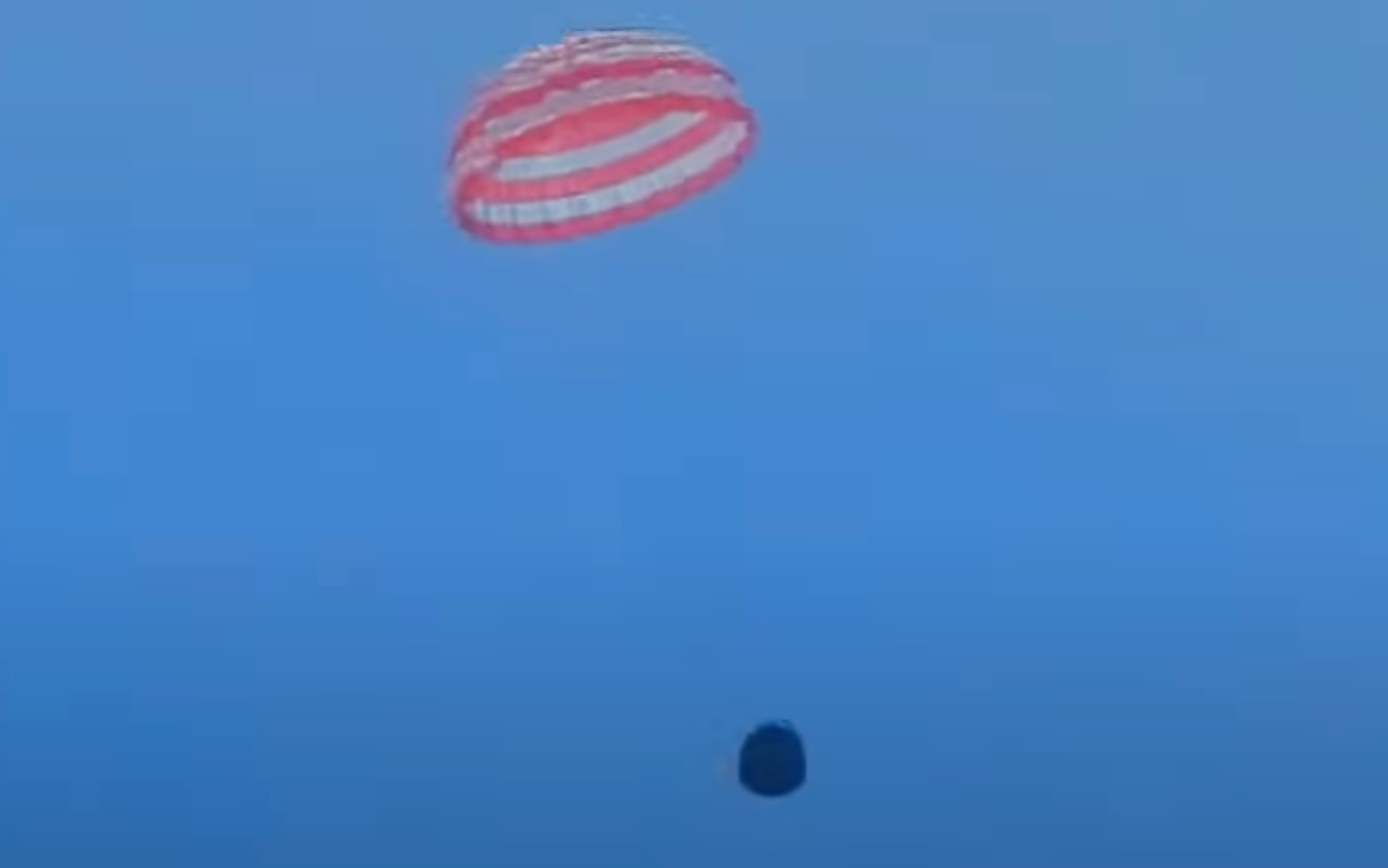Chang’e 6 probe carrying world’s first sample from Moon’s far side returns to Earth
Return capsule landed in desert of Inner Mongolia region on Tuesday morning
Your support helps us to tell the story
From reproductive rights to climate change to Big Tech, The Independent is on the ground when the story is developing. Whether it's investigating the financials of Elon Musk's pro-Trump PAC or producing our latest documentary, 'The A Word', which shines a light on the American women fighting for reproductive rights, we know how important it is to parse out the facts from the messaging.
At such a critical moment in US history, we need reporters on the ground. Your donation allows us to keep sending journalists to speak to both sides of the story.
The Independent is trusted by Americans across the entire political spectrum. And unlike many other quality news outlets, we choose not to lock Americans out of our reporting and analysis with paywalls. We believe quality journalism should be available to everyone, paid for by those who can afford it.
Your support makes all the difference.China’s Chang’e 6 probe has touched down back on Earth after its historic mission to bring back the first samples from the far side of the Moon.
The robotic probe landed in China’s Inner Mongolia desert on Tuesday, with the return capsule containing rocks harvested from the Moon’s far side. China’s space agency said the probe landed at 6.07am GMT, or 2.07pm local time.
Scientists hope that the samples will shed new light on the Moon’s geology and history.
The complex mission, consisting of four modules – an orbiter, a lander, an ascender, and a return capsule – has already achieved several milestones since its soft landing on the Moon’s far side on 1 June.
China remains the only country to have landed a probe in this part of the Moon called South Polar-Aitkin (SPA) basin which is dotted with deep craters and perpetually facing away from the Earth.
The Chang’e 6 lander collected 2 kg of lunar material using a scoop and a drill which was then launched aboard the ascender to the mission’s orbiter.

In the process, the country made history by launching the first-ever probe from the far side as the mission’s ascent vehicle took off carrying the specimens from the moon’s oldest impact basin.
The orbiter, carrying the lunar samples in a return capsule, then began heading towards Earth around 21 June, according to Nasa.
“This is the first time in human history for a spacecraft to take off from the far side of the moon,” the Chinese space agency CNSA said at the time.
Scientists on Earth are already excited about studying samples collected from the mission, which they hope will help explain how the Moon formed and evolved.
The samples consist of 2.5million-year-old volcanic rock along with small amounts of material generated by meteorite strikes on the Moon.
“There are significant differences between the far side and the near side of the Moon in terms of lunar crustal thickness, volcanic activity, composition, etc., especially considering that CE-6 landed on the South Polar-Aitkin (SPA) basin, the special terrane of the Moon,” geologist Zongyu Yue from the Chinese Academy of Sciences said.
“The CE-6 samples, being the first obtained from the far side of the Moon, are expected to answer one of the most fundamental scientific questions in lunar science research: what geologic activity is responsible for the differences between the two sides?” Dr Yue said.
Researchers hope analysis of samples will also reveal secrets about the Solar System’s early impact history.

Join our commenting forum
Join thought-provoking conversations, follow other Independent readers and see their replies
Comments